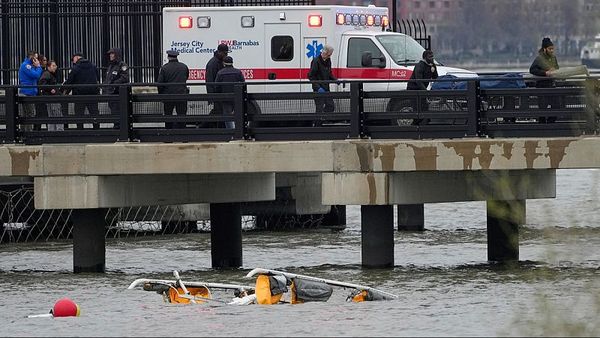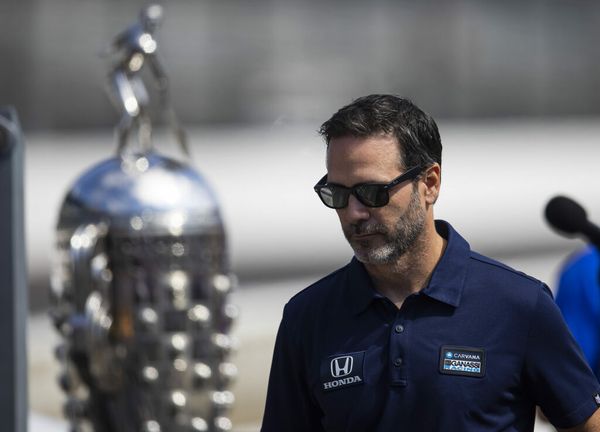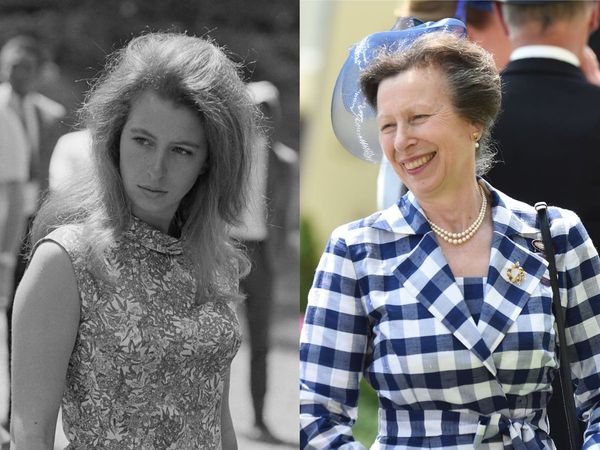
This story was originally published in 2019 and has been updated.
The Indianapolis 500 is one of the oldest and greatest motor sports events in the entire world, capturing the attention of diehard racing fans and once-a-year viewers a like.
The first Indy 500 was back in 1911, so with more than a century of history, it’s hard to keep track of every detail and quirk related to the race and the iconic Indianapolis Motor Speedway where it’s held. So here are 10 peculiar lesser-known facts about the race.
MORE INDY 500: Meet the true hero of the Indy 500’s bizarre celebratory tradition: The Veteran Milk Man
1
There are six years in history without an Indy 500
It doesn’t take a math wiz to realize the race starting in 1911 but Sunday being the 107th running doesn’t add up. In 1917 and 1918 and later from 1942 to 1945, there was not an Indy 500 because of World War I and World War II.
But picking back up in 1946, there has since never been a break in the event known as The Greatest Spectacle in Racing. That includes in 2020 early in the COVID-19 pandemic, when the race was delayed and pushed back to August.

2
The largest margin of victory was more than 13 minutes
Understandably, this one goes way back. Without the racing technological advancements made in the last 100 or so years, race cars were far more spread out compared with drivers now winning races by fractions of a second. So in the 1913 Indy 500, a man named Jules Goux “edged” out another guy named Spencer Wishart by 13 minutes and 8.40 seconds.
For what it’s worth, the slimmest margin of victory was .043 seconds in 1992.
3
The difference between the fastest and slowest average winning speed is incredible
Along the same lines, the average speeds have drastically changed. But they’re also one of the best and simplest gauges for just how monumental developments in racing have been since the early days of the Indy 500.
The fastest average winning speed and the slowest average winning speed are separated by 110 years. Ray Harroun won the 1911 Indy 500 with a 74.602-mile per hour average speed. And in 2021 on his way to a fourth Indy 500 win, Hélio Castroneves set the record for fastest average winning speed at 190.690 miles per hour — a mark previously held by Tony Kanaan, who. won in 2013, averaging 187.433 miles per hour.

4
The Yard of Bricks goes beyond the physical track
The track in the early 1900s was paved with bricks, but all that’s left of it is a 36-inch wide strip that cuts across the front stretch of the 2.5-mile oval. It’s why the track is nicknamed the Brickyard. But the Yard of Bricks goes beyond the track’s inside barrier and cuts across the infield, which you can see in the beginning of this video:
Cars weren’t on track today, but that doesn’t mean you can’t be.
Take a drone ride around @IMS via our friends at @IndyCaronNBC!#ThisIsMay | #Indy500 pic.twitter.com/GC5EpF7l03
— Indianapolis Motor Speedway (@IMS) May 21, 2019
5
The brick-kissing tradition was actually started by a NASCAR driver
The Indy 500 is far from the only race held at Indianapolis Motor Speedway, and NASCAR started making an annual stop to the historic track in 1994, which means this tradition isn’t as old as you’d guess either. Race winners celebrate in a variety of ways, but they and their teams and families line up on the Yard of Bricks and kiss them for iconic photos. And although it’s a given now at the Indy 500, it started in NASCAR.
The tradition of “kissing the bricks” was started by NASCAR champion Dale Jarrett. After his Brickyard 400 victory in 1996, Jarrett and crew chief Todd Parrott decided to walk out to the start-finish line, kneel and kiss the Yard of Bricks to pay tribute to the fabled history of the Indianapolis Motor Speedway.
The team joined them for a group kiss on the bricks, and an Indianapolis tradition was born that Indianapolis 500 and Brickyard 400 winners have followed since.

6
Only 9 women have ever competed in the Indy 500
The number is disappointing for a sport where men have no physical advantage over women. Pippa Mann was the only woman in the 2019 Indy 500, and Simona de Silvestro was the only woman in the 2021 race. And in the 2020 Indy 500, for the first time since the 1999 race, no women competed in “The Greatest Spectacle in Racing.”
Danica Patrick retired in 2018 after her eighth Indy 500 start, and she holds many of the records for women in the event, including highest start (fourth, 2005), highest finish (third, 2005) and most laps led in a single race (19, 2005).
Janet Guthrie was the first to qualify and compete in it in 1977, and her best finish was ninth in 1978. Other women to compete in the Indy 500 are Lyn St. James (1992-1997, 2000), Sarah Fisher (2000-2004, 2007-2010), Milka Duno (2007-2009), Ana Beatriz (2010-2013), de Silvestro (2010-2013, 2015, 2021) and Katherine Legge (2012-2013).

7
The Andrettis are the only ones to have four family members compete in the same Indy 500
And they did it twice. According to IMS, Mario, Michael (son of Mario), Jeff (son of Mario) and John (nephew of Mario) all competed in the 1991 and 1992 Indy 500s. Five total members of the Andretti family have competed in the iconic event, and Marco, who is Michael’s son and Mario’s grandson, is starting from the 23rd position Sunday.
However, the Andretti Curse might be a real thing. Mario is the only member of the family to ever win it, and that was back in 1969. As the racing world celebrates the 50th anniversary of his victory, it’s impossible to forget the the family is 0-for-68 since then. Marco came close but finished second in 2006.
“I don’t know what it is, I don’t know if I believe in curses, but there’s something weird going on when you have 73 Andretti starts and one win,” Michael Andretti told the Associated Press in 2019.

8
Tony Stewart is the only driver to complete all 1,100 miles of the Memorial Day Double
The Memorial Day Double is a daunting task. It’s when drivers race in the Indy 500, which starts midday, in Indiana and then fly to Charlotte for NASCAR’s Coca-Cola 600 that evening.
Only four drivers have ever attempted it: John Andretti, Robby Gordon, Tony Stewart and Kurt Busch. And Stewart is the only one to drive every mile. Busch did it most recently, but after impressively finishing sixth in the Indy 500 — his one and only IndyCar Series event — he lost his engine and only finished 271 of 400 laps in the Coke 600.
9
The Borg-Warner Trophy is massive

Of more mainstream sports, the Stanley Cup probably comes to mind as the biggest trophy out there. But the Borg-Warner blows that away.
Including the base, the trophy is 64.75 inches (5 feet, 4.75 inches) tall and weighs about 110 pounds. Probably a big reason why you don’t actually see exhausted winning drivers lift it over their heads too often. Also without the base, it’s still 52 inches.
When the trophy was first commissioned in 1935, it cost $10,000, but in 2022, it’s valued at more than $3.5 million, per IMS.
10
It also has the winners’ faces sculpted into it

Regardless of what you may think about the Borg-Warner’s style or size or racing in general, it’s decidedly awesome to have an image of your face engraved on a historic trophy — even if the final product doesn’t resemble the real thing too closely.
The trophy was first unveiled in 1936, and there are now 105 faces on it. Four drivers are four-time champions — A.J. Foyt (1961, ‘64, ‘67, ‘77), Al Unser (1970, ‘71, ‘78, ‘87), Rick Mears (1979, ‘84, ‘88, ‘91) and Hélio Castroneves (2001, 2002, 2009, 2021) — and therefore are the only ones whose faces appear more than three times.
More about the faces via Indianapolis Motor Speedway:
Mears is the only one of those [four] to have a new likeness rendered for each of his four victories. Tom Sneva (1983) is the only champion who appears on the trophy wearing his eyeglasses, by his request.










